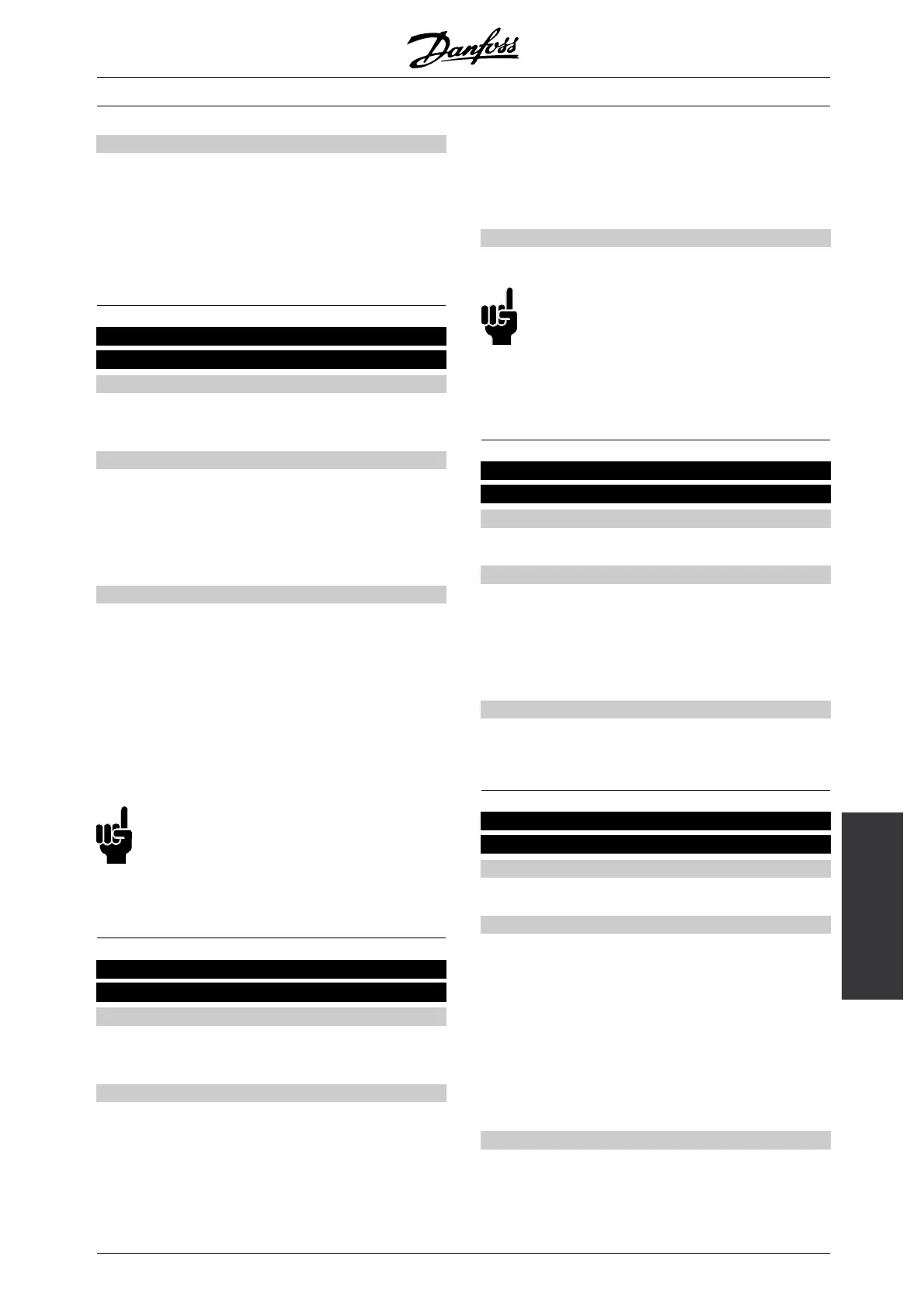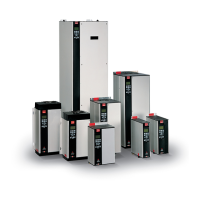VLT
®
5000 Series
Programming
Description of choice:
If the frequency converter is to reduce the
output frequency in case the feedback signal
increases, select Normal [0].
If the frequency converter is to increase the
output frequency in case the feedback signal
increases, select Inverse [1].
438 Process PID anti windup
(PROC ANTI WINDUP)
Value:
Off (DISABLE)
[0]
✭On (ENABLE)
[1]
Function:
It is possible to select whether the process regulator
is to continue regulating on an error even if it is not
possible to increase/reduce the output frequency.
Used together with Process control, closed
loop (parameter 100).
Description of choice:
The factory setting is Enable [1], which means that
the integration link is adjusted in relation to the
actual output frequency if either the current limit or
the max./min. frequency has been reached. The
process regulator will not engage again until either
the error is zero or its sign has changed.
Select Disable [0] if the integrator is to continue
integratingonanerror,evenifitisnotpossible
to remove the fault by such control.
NB!:
If Disable [0] is selected, it will mean that when
the error changes its sign, the integrator will
first have to integrate down from the level
obtained as a result of the former error, before any
change to the output frequency occurs.
439 Process PID start frequency
(PROC START VALUE)
Value:
f
MIN
-f
MAX
(parameter 201 and 202)
✭ parameter 201
Function:
When the start signal comes, the frequency conver
ter
will react in the form of Speed control, open loop
following the ramp. Only when the programmed start
frequency has been obtained, will it change ove
rto
Process control, closed loop. In addition, it is possible
to set a frequency that corresponds to the speed at
which the process normally runs, which will enable the
required process conditions to be reached sooner.
Used together with Process control, closed
loop (parameter 100).
Description of choice:
Set the required start frequency.
NB!:
If the frequency converter is running at the
current limit before the desired start frequency
is obtained, the process regulator will not be
activated. For the regulator to be activated anyway, the
start frequency must be lowered to the required output
frequency. This can be done during operation.
440 Process PID proportional gain
(PROC. PROP. GAIN)
Value:
0.00 - 10.00
✭ 0.01
Function:
The proportional gain indicates the number of
times the error between the set point and the
feedback signal is to be applied.
Used together with Process control, closed
loop (parameter 100).
Description of choice:
Quick control is obtained by a high gain, but if the gain
is too high, the process may become unstable.
441 Process PID integral time
(PROC. INTEGR. T.)
Value:
0.01 - 9999.99 sec. (OFF)
✭ OFF
Function:
The integrator provides an increasing gain at a constant
error between the set point and the feedback signal.
The greater the error, the quicker the gain will increase.
The integral time is the time needed by the integrator
to reach the same gain as the proportional gain.
The gain is proportional to the speed at which
the error changes.
Used together with Process control, closed
loop (parameter 100).
Description of choice:
Quick control is obtained at a short integral time.
However, this time may become too short, which
can make the process unstable.
✭
= factory setting. () = display text [] = value for use in communication via serial communication port
MG.51.A9.02 - VLT is a registered Danfoss trademark
147
